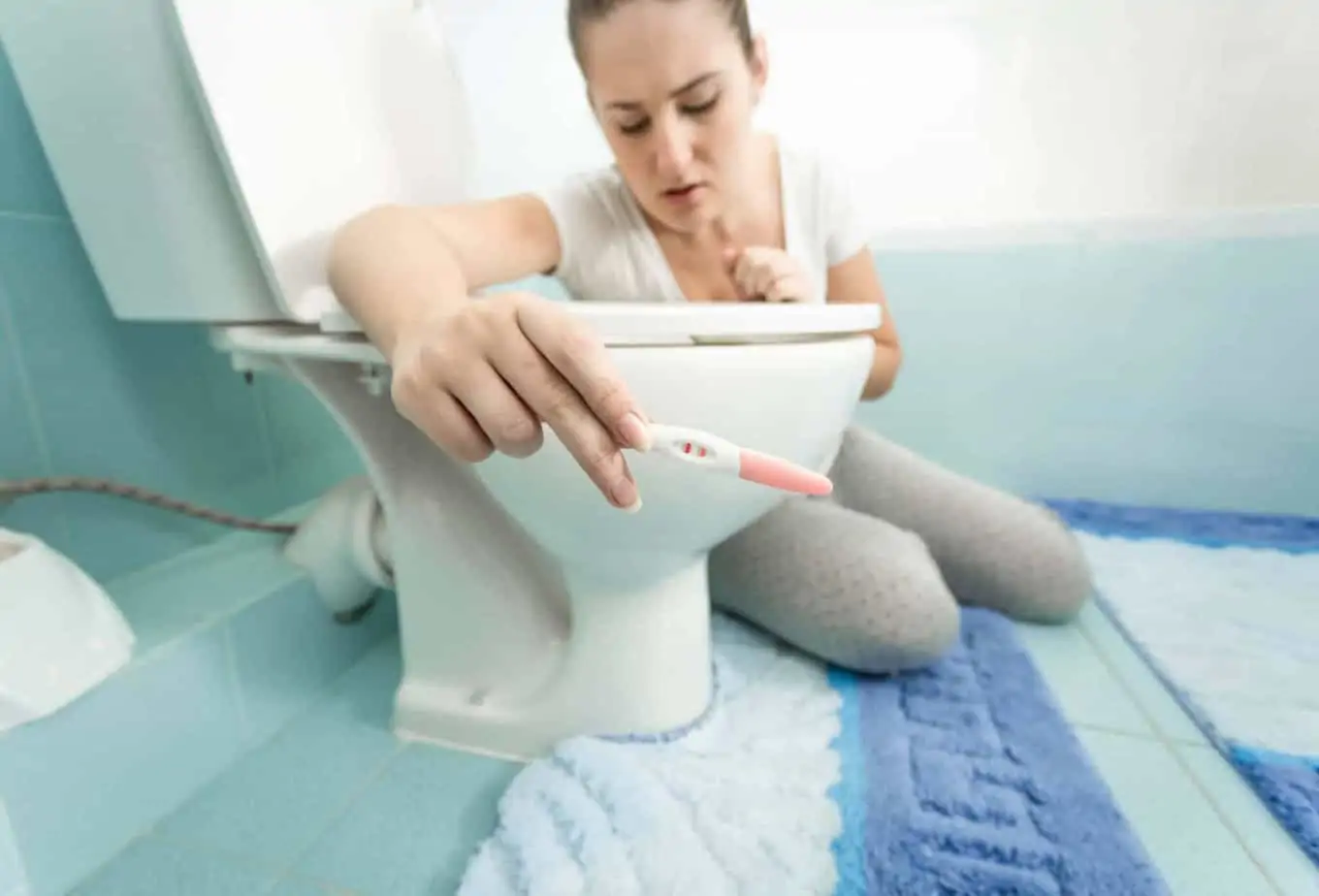Labor & delivery takes a big toll on the body, and while you’re adjusting to post-pregnancy life, it’s essential to give attention to your body’s postpartum healing & recovery with extra TLC. The body’s healing ability can be helped along with a postpartum sitz bath as well as providing instant relief from soreness and pain. A postpartum sitz bath can also help speed up the postpartum recovery process.
If you haven’t already, check out the Preparing for Baby Ultimate Toolkit.
Healing Power of the Postpartum Sitz bath
After labor and delivery, a woman’s body begins what can often be described, as a slow and sometimes painful process of healing and recovery.
After all, having a baby is hard work but that’s only the beginning of it all.
The postpartum period is an incredible time for bonding with your baby, but it’s also time prioritize healing yourself and adjust to post-pregnancy life. After labor and delivery, focusing on your own self-care and making sure you give your body the extra TLC it needs to recover is essential.
One simple way to help relieve pain and even speed up postpartum recovery is with a postpartum sitz bath.
I didn’t use a sitz bath after my first pregnancy with twins (although I’m sure this would have been a tremendous help during recovery), but I did use a postpartum sitz bath after my second pregnancy when a friend who is a birth doula recommended it for it’s natural ability to speed up the recovery process.
Once I tried it, I immediately found it to be a huge relief as an effective pain management technique I’ve told my own friends about again and again. I wish I would have known when I had twins the first time around!
What Exactly is a Postpartum Sitz Bath? I’ve never heard of it!
A sitz bath is a gentle way to soak your perineum, relive pain, and maybe even help to speed up postpartum recovery.
The point of a sitz bath is give you a very gentle, comforting warm bath to relieve you from post-birth discomfort and pain naturally, and keep the area clean.
Healing Powers in a Sitz Bath
Sitz baths have been around for centuries, but more recently women have been adding natural remedies like Epsom salts, herbs and essential oils to make the healing process more effective.
Some of the helming properties of size baths you make, can include the following:
- Warm water (you can use cold too but you won’t have the same benefit as warm water like you’ll read here) increases blood flow which promotes healing and helps to reduce swelling. I suggest using filtered water and not tap water, so you avoid exposure to chemicals like chlorine and fluoride entering your body through orifices and healing wounds.
- Increased blood flow also helps to heal hemorrhoids, itching and pain.
- It’s an easy way to keep everything clean especially during postpartum bleeding, discharge, wearing a pad and post-pregnancy life.
- When you add Epsom salt (do not use any with fragrance!), which has incredible natural healing properties and is an anti-inflammatory, it’ll help to reduce any swelling you have, helps you to relax, ease post delivery cramping as your uterus shrinks, bring down your stress hormones and is overall, very soothing.
- Essential oils have anti-fungal, anti-inflammatory and anti-bacterial properties.
- Herbs mixed into a healing sitz bath can speed up healing, reduce swelling and inflammation from their wound-healing and anti-bacterial abilities.
- A healing sitz bath can help your body relax which helps with cramping as your uterus descends, constipation and general discomfort after labor and delivery.
How to Use a Postpartum Sitz Bath
You can use a bathtub with several inches of water or you can also buy an over the toilet sitz bath to place on your toilet. These are also good for treating hemorrhoids, so it can be a tool to keep in the house for multiple uses if you ever have the need.
- Fill your bathtub or the sitz bath with enough water to sit in and cover yourself (about 3-4 inches of water)
- Whether you use cold or warm water is a personal preference, just don’t use hot water because you may burn yourself. I found warm water to be gentler and more soothing. I suggest using filtered water because tap water can have chlorine, fluoride and other chemicals you don’t want in your body.
- If you chose to use your bathtub, make sure you clean it well beforehand, and rinse out all the cleaning products afterwards completely to prevent infection and bacteria down there.
- Add Epsom salt and essential oils if you like but make sure your essential oils are pure, high grade and check to see if they need to be diluted first with a carrier oil such as olive oil or coconut oil. (lavender essential oil is anti-fungal, anti-inflammatory and anti-bacterials is also a major essential oil know for relaxation, calming and sleep.) Do not use any “hot” essential oils like cinnamon or any from the mint family because this will burn you.
- Sit in your sitz bath for 15-20 minutes for relief. You can repeat this multiple times per day for relief as you need. If you have stitches, limit yourself to once a day and try to let the area air-dry afterwards.
Using Herbs in a Healing Sitz Bath
To boost additional healing, consider adding healing herbs to your sitz bath. Herbs are a natural way to speed up healing, help reduce swelling and inflammation due to childbirth because of their incredible wound-healing and antibacterial properties.
Some herb suggestions are:
- Calendula. This healing herb has anti-inflammatory properties which is why you find it in a lot of baby products, but it’s good for ointments and bath teas, too.
- Camomile. This commonly known herb is profound for helping you relax and soothing anxiety, as well as inflammation. It is also a natural antibiotic, anti-fungal, and anti-bacterial herb.
- Comfrey Leaf. This is a powerful healing herb, good for external use.
- Plantain Leaf. Known for it’s power to heal inflammation and promote quick healing.
- Witch Hazel. This herb helps to speed up healing and stop bleeding. Yarrow has antibacterial and anti fungal compounds that are helpful in replenishing the intestinal flora.
- Lady’s Mantle. I hadn’t heard of this herb until my naturopath mentioned it, and shared that it provides relief for inflammation, speeds up healing time and particularly good for postpartum sitz baths because of the tender area you are soaking.
Using Herbs in a Sitz Bath: Combine the herbs into a muslin bag or grain steeping bag, fill your bath with warm water and allow the epsom salt and bag of herbs to steep before getting in. You don’t want the loose leafs floating around in the bath.
Related Pregnancy & Post-Pregnancy Information:
- 11 Ways to Make Postpartum Recovery Easier (& Quicker)
- Create a Birth Plan: Includes a Sample Birth Plan & Blank Birth Plan to Fill Out For Labor & Delivery
- What is a Doula? The Benefits to Having a Labor Coach On Call
- Baby on a Budget: Budgeting for the 1st Year of Baby Costs
- 22 Natural Remedies to Treat Morning Sickness
- Planning for a Healthy Pregnancy & Helpful Hacks for New Moms
- Newborn Care: Thriving the First Month Home with Baby
- Bringing Baby Home: How to Survive the First Week Home with Baby
- 11 Baby Sleep Tips to Help Your Newborn Baby Sleep
Want even more?
Shop All Parenting Resources
Shop all of our parenting resources from self-regulation tools and managing big emotions to building self esteem and confidence. There are resources for all seasons of life!








